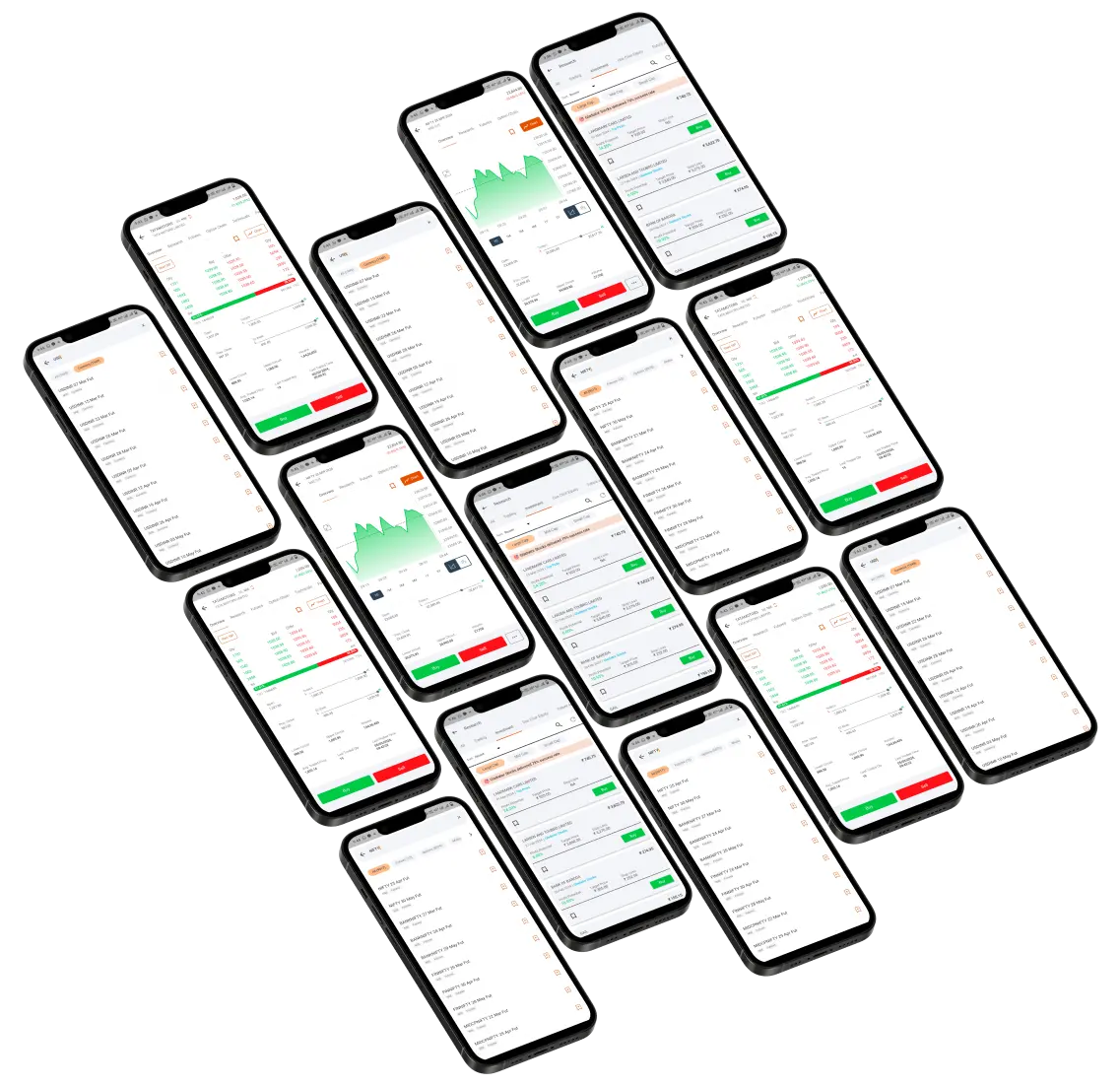
What is T+0 settlement cycle introduced by SEBI?
In a bold move aimed at modernizing and fortifying India's financial markets, the Securities and Exchange Board of India (SEBI) introduced the T+0 settlement cycle. This innovative system enables the settlement of trades on the same day as the transaction occurs, marking a departure from the traditional T+2 settlement cycle. The T+0 settlement cycle reduces transactional risks and enhances market efficiency by providing immediate liquidity to investors.
The role of SEBI
- According to reports, the Securities and Exchange Board of India (SEBI) plans to introduce T+0 settlement on an optional basis starting on 28th March, 2024.
- This move aligns with SEBI's commitment to fostering a more dynamic and resilient financial ecosystem, thereby bolstering investor confidence and participation.
- SEBI's proactive stance in introducing the T+0 settlement cycle underscores its commitment to promoting investor welfare, market integrity, and regulatory effectiveness.
- Through this forward-thinking initiative, SEBI not only reinforces India's position as a progressive and innovative player in the global financial landscape but also sets a precedent for other jurisdictions to emulate.
- Furthermore, this settlement process also mitigates risks for investors and minimises the risk exposure of Clearing Corporations (CC).
T+0 settlement: Implementation date
The Securities and Exchange Board of India (SEBI) has proposed a two-phase plan for introducing the T+0 settlement cycle.
Phase 1:
- In this phase, the regulatory body aims to introduce the T+0 cycle on 28th March, 2024, where trades made until 1:30 PM will be considered for settlement on the same day by 4:30 PM.
- In this phase, the regulatory body plans to implement an optional trade-by-trade settlement system, which would extend trading time, enabling transactions to be carried out until 3:30 PM.
- Following the introduction of the optional instant settlement mechanism [Phase 2], SEBI has announced the discontinuation of phase 1.
Phase 2:
Due to time constraints in processing custodial trades, investors who handle trade and settlement through custodians will be excluded from Phase 1 for the time being. This mainly includes investors investing in foreign funds. However, in the case of real-time settlement, all investors, including those who settle through custodians, will be allowed to participate.
What investors and traders need to know about the T+0 settlement change
Although there are some significant advantages to the change in the settlement cycle, there are also some important considerations that traders and investors should bear in mind. The introduction of the T+0 settlement system would bring about significant changes to the stock market infrastructure, systems, and processes, which could prove to be very complex and expensive. With the introduction of instant settlement, traders and investors will experience much improved liquidity as the funds will be disbursed on the day of the trade. But on the flip side, periods of high trading activity could result in creating higher market volatility.
Although the T+0 system will provide investors with greater opportunities to participate in the market, investors, traders, and brokers will need to adapt to this quick shift. And while this may be a challenge initially, the T+0 settlement system has the potential to enhance the dynamism and efficiency of the Indian stock market.
Impact of T+0 on Investors
T+0 settlement implementation can significantly impact investors by redefining trading strategies, risk management approaches, and the overall experience within the securities market. Here’s the impact a T+0 Cycle can have:
Increased Trading Opportunities
- T+0 settlement would allow investors to benefit from immediate trade execution and settlement, providing them with improved flexibility to capitalise on short-term trading opportunities and market fluctuations.
- Investors can react quickly to market developments, execute trades promptly, and optimise their investment strategies in real-time.
Reduced Settlement Risk
- T+0 settlement eliminates the need to wait for an additional day for trading confirmation and settlement.
- Thus, reducing settlement risk and enhancing investor confidence for smoother trading experiences.
Enhanced Liquidity Management
- T+0 settlement facilitates efficient liquidity management by enabling investors to access funds and securities immediately after trade execution.
- This allows them to reinvest proceeds or deploy capital into new opportunities without waiting for settlement cycles, maximizing portfolio liquidity and agility.
Adaptation of Trading Strategies
- T+0 settlement may prompt investors to employ more active trading strategies like day trading or scalping to exploit short-term price movements and generate quick profits.
- Algorithmic and high-frequency trading strategies may also become more prevalent, leveraging real-time settlement capabilities for rapid trade execution.
Impact of T+0 on Stock Brokers
Here are some potential impacts the T+0 cycle could have on brokers:
- According to reports, the T+0 cycle could have potential impacts on brokers. Although the regulator's plan may increase liquidity in the stock market by freeing up margins, it could adversely affect brokers whose business model is dependent on interest income from client funds.
- Several broking companies already have instant settlement of trades as their current practice, through which online brokers are already crediting their clients' trading accounts as soon as the client sells their holding stock.
- This shift to T+0 cycle settlement would require a higher learning curve and impact brokers due to the reduction in the float period.
- Brokers whose business model relies on interest income would need to reassess their strategies to fit the reduced float period.
History of Trade settlement cycles in India
Since stock trading first began back in 1855, a lot has changed. With the advent of technology, people can now easily trade stocks online from the comfort of their homes or offices. Additionally, SEBI has been exploring the potential possibility of instant settlement trades, from T+2 days to T+1 days of settlement the stock market has come a long way.
Here is an overview of the history of trade settlement cycles regulated by SEBI:
|
YEAR |
DEVELOPMENT |
|
1990s
|
Introduction of Rolling Settlement (1993)
|
|
2000s |
1) Move to T+2 Settlement (2003)
2) Uniform Settlement Cycle for All Exchanges (2003):
3) Introduction of Rolling Settlement for Derivatives (2003):
|
|
2010s |
1) Consideration of T+1 Settlement (2012):
2) Implementation of T+2 for Commodities (2010):
|
|
Recent Developments |
1) Continued Reforms and the Move to a T+1 Cycle
2) Digital Initiatives and Faster Settlements:
3) Exploration of Same-Day Settlement (T+0):
|
Conclusion
In recent years, the Securities and Exchange Board of India (SEBI) has taken a proactive approach to regulate trade settlement cycles in the country. The aim of SEBI's efforts has been to enhance market efficiency, reduce risks, and align with international best practices. Some of the key milestones in this evolution include the transition from T+3 to T+2 for equities and the extension of rolling settlements to derivatives and commodities.
SEBI's commitment to improving the infrastructure of Indian capital markets is further reflected in its focus on digitalisation. As technology continues to play an increasingly crucial role in financial markets, the regulator is keen to ensure that India's market infrastructure keeps pace with global standards. SEBI's forward-thinking approach is demonstrated by the move towards a shorter settlement cycle, i.e., T+0.
Overall, SEBI's efforts to regulate trade settlement cycles in India have contributed significantly to the country's financial development.










